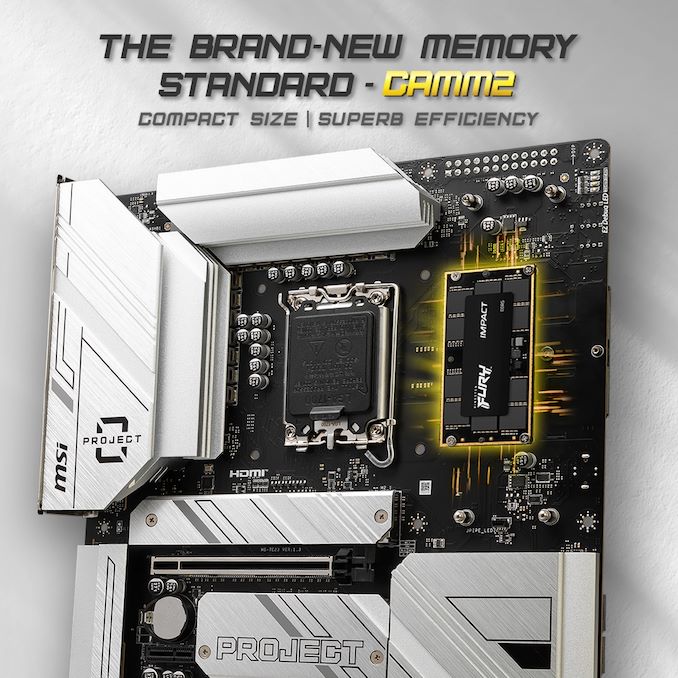On Thursday, MSI revealed the inaugural image of a novel desktop motherboard compatible with the groundbreaking DDR5 Compression Attached Memory Module (CAMM2). The DDR5 CAMM2 modules aim to surpass the limitations of the SO-DIMM format traditionally utilized in laptops by addressing issues related to high-speed signaling and capacity constraints, in addition to reducing the required space significantly. Although the appearance of CAMM2 in laptops has been highly anticipated, its incorporation into a PC motherboard is somewhat unexpected, considering the lesser space restrictions within PCs.
Featuring support for the latest 14th Generation Core processors from Intel, MSI’s Z790 Project Zero Plus motherboard essentially serves as a demonstration platform for several novel technologies and unconventional configuration options, with the CAMM2 connector being a central feature. This singular connector facilitates a 128-bit DDR5 memory bus, enabling the installation of ample RAM capacity through just one horizontally-oriented CAMM2 module. The design of the Zero Plus also highlights power connectors located at the backside for enhanced cable management.
CAMM2 is intended to supplant the traditional SO-DIMM format, boasting up to 64% less space consumption compared to a pair of DDR5 SO-DIMMs. It also significantly refines signal and power routing within the motherboard by guaranteeing uniform memory trace lengths, which mitigates some of the signaling challenges associated with supporting multiple SO-DIMM slots. Given DDR5’s sensitivity to signaling issues – where configurations with 2 DIMMs Per Channel (2DPC) suffer from reduced maximum frequency even in desktop setups – CAMM2 modules are poised to streamline and enhance laptop designs within DDR5’s operational boundaries.
The broader adoption of CAMM2, however, is still uncertain. Unlike LPCAMM2, its LPDDR5X equivalent, DDR5 CAMM2 hasn’t yet captivated laptop manufacturers, mainly because it doesn’t add any novel features like socketed LPDDR5X does.
As for CAMM2’s application in ATX desktop environments, it remains largely uncharted territory, which explains the experimental nature of MSI’s motherboard. While the reduction in space is less crucial in desktops, CAMM2 does offer advantages such as decreased Z-height, which prevents interference with CPU coolers. Desktop manufacturers might also consider benefits like streamlined inventory management, as CAMM2 enables the use of identical memory modules across laptops and desktops. The potential signaling advantages of CAMM2 over traditional DIMMs in the long run also present an intriguing facet for exploration.
MSI intends to present its Z790 Project Zero Plus platform at Computex, in collaboration with its memory partner Kingston, which will showcase its Fury Impact CAMM2 memory module, marking one of the first introductions of DDR5 CAMM2 modules.
